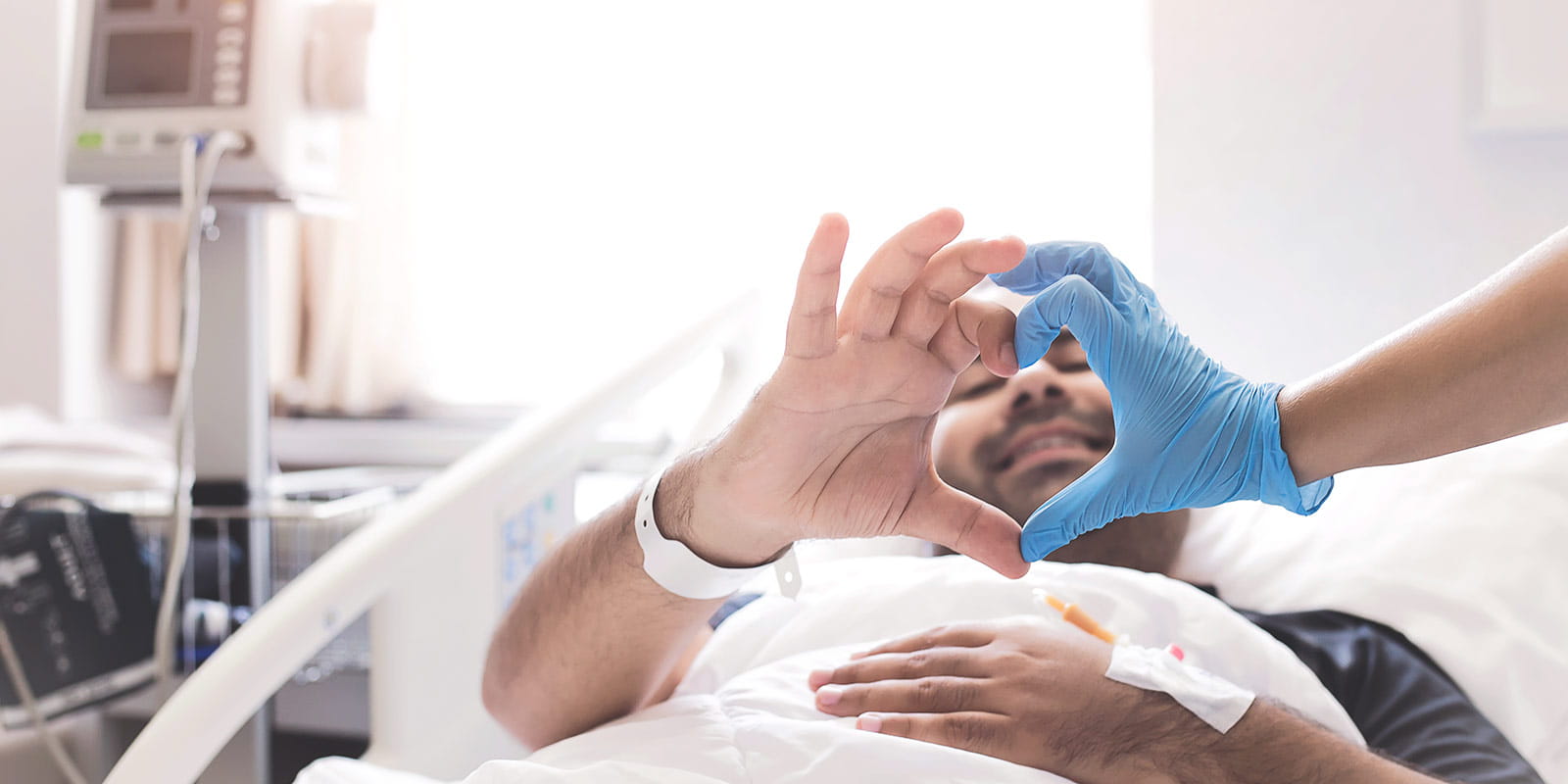
UH Experts Offer Advanced Surgical Reconstruction for Cancer Survivors
Radiation therapy is often used as part of the treatment plan for cancers of the bladder, prostate, uterus and cervix. Although it can be highly effective in treating cancer, radiation to the organs of the genitourinary systems can sometimes cause secondary yet devastating side effects such as scar tissue, fistulas and sexual and urinary problems.
In the highly specialized field of reconstructive urology, UH urology experts work closely with oncologists and other specialists including colorectal and plastic surgeons to help patients restore genitourinary function that has been compromised by cancer and/or cancer treatments.

Quality Outcomes Depend on Exceptional Surgeons
Optimal outcomes of reconstructive urology procedures after cancer survivorship are highly dependent on the expertise and experience of the surgeon. University Hospitals is pleased to offer patients the most advanced care and surgical techniques through our reconstructive urology program led by Shubham Gupta, MD, FACS, fellowship-trained reconstructive urologist. Dr. Gupta and his team offer a wide variety of medical and reconstructive procedures to restore patients functionally, psychologically and cosmetically and improve their quality of life.
Advanced Treatments for Genitourinary Complications after Cancer
UH experts combine medical, psychological and advanced surgical techniques to address a wide range of conditions that can occur in men and women following treatment for genitourinary cancers.
The most common concerns include:
- Bladder Neck Contracture after Removal of the Prostate Gland (Prostatectomy)
-
For some men, the surgical removal of all or part of the prostate gland (prostatectomy) or treatment with radiation is necessary to manage their prostate cancer. As part of this procedure, the surgeon must create a connection between the neck of the bladder and the urethra after the prostate is removed. If this new connection becomes narrowed from scarring or radiation treatments, this is called a bladder neck contracture.
A bladder neck contracture can cause a slow urine stream or urine leakage and can lead to bladder and/or kidney damage. The reconstructive urology experts at UH use the most advanced techniques and technology to safely and effectively repair bladder neck contractures and restore normal function.
- Incontinence after Removal of the Prostate Gland (Prostatectomy)
-
For some men, the surgical removal of all or part of the prostate gland or treatment with radiation is necessary to manage their prostate cancer. One of the most common complications after such treatments is stress urinary incontinence – the involuntary release of urine when you sneeze, cough or lift something heavy. Incontinence after prostatectomy may be temporary or long-term.
If you experience incontinence after prostate cancer treatment, UH urology experts can work with you to find ways to manage this troublesome side effect. Treatments may include medications, special pelvic floor exercises and/or surgical interventions.
- Rectourethral Fistula
-
A rectourethral fistula is when an abnormal opening is created between the rectum and the urethra, a rare but harmful condition that can be caused by surgical or traumatic injury; inflammation or infection; or it may occur as a side effect of some genitourinary cancer treatments including radiation. The abnormal opening can allow urine to leak into the rectum and, even more dangerously, allow feces to pass into the urethra and travel into the bladder, which can lead to chronic infections and inflammation.
Repairing a rectourethral fistula is a complex procedure that requires meticulous goal – oriented planning and multi-disciplinary reconstruction of the urethra and rectum. The reconstructive urology experts at UH use the most advanced techniques and technology to safely and effectively repair this type of fistula and restore normal function.
- Sexual Dysfunction after Removal of the Prostate Gland (Prostatectomy)
-
For some men, the surgical removal of all or part of the prostate gland or treatment with radiation is necessary to manage their prostate cancer. Even though the urology specialists at University Hospitals use the most advanced, nerve-sparing surgical techniques for prostatectomy, most men will experience some degree of erectile dysfunction or impotence after surgery. For some, the problem will gradually improve over time but for others, it may persist and require treatment.
UH urology specialists can help. Treatment options may include medications to stimulate blood flow and reduce the amount of scar tissue that forms after surgery. If medical therapy is not effective, your surgeon may offer options such as penile injections and/or the use of a vacuum erection device or the surgical insertion of a penile prosthesis.
If you experience sexual dysfunction after prostate cancer treatment, talk to your doctor about your best treatment options based on the severity of your symptoms and your goals and expectations for sexual functioning.
- Urinary Diversion and Bladder Reconstruction
-
When a patient’s bladder is damaged by radiation therapy or removed altogether as a treatment for bladder cancer, the process by which urine exits the body must be surgically reconfigured by a procedure called urinary diversion. There are three main approaches to urinary diversion that your surgeon may consider as part of your treatment plan. They include:
- Ileal conduit (Urostomy)
A small section of your intestine (small bowel) is used to create a new tube or channel. One end of the tube is attached to the ureters (the tubes that carry urine from the kidneys to the bladder) and the other end is brought out through a small opening (stoma) in the abdomen and attached to a flat, watertight bag which collects the urine. The bag is held in place against the body with adhesive and will need to be emptied regularly. Your doctor or nurse will show you how to do this. - Continent Urinary Diversion
A small piece of your bowel is used to make an internal pouch which is then attached to the ureters (the tubes that carry urine from the kidneys to the bladder). The surgeon then creates a small tube from a piece of tissue taken from your body. The tube is attached to the internal pouch at one end and the other end is brought through a small opening in the abdomen (stoma). The new pouch collects urine and the patient empties it several times a day by inserting a catheter through the stoma. Your doctor or nurse will show you how to do this. - Bladder Reconstruction/Neobladder
With this procedure, a piece of your bowel is used to create a new bladder (neobladder). The new bladder is attached to the ureters (the tubes that carry urine from the kidneys to the bladder) and to the urethra (the tube that carries urine out of the body). When the procedure is successful, urination will occur as it did before, but patients will need to remember to empty their bladder regularly as they no longer have the nerves that tell them when the bladder is full. Your doctor or nurse will teach you how to flex your abdominal muscles to begin the flow of urine.
- Ileal conduit (Urostomy)
- Reproductive Organ-Sparing Cystectomy
-
In many bladder cancer patients, a radical cystectomy, or the surgical removal of the bladder, is required. In female patients, the standard protocol is to remove the uterus, cervix, tubes, ovaries and the anterior wall of the vagina along with the bladder. However, this can have a physiological impact on patients with the removal of the ovaries, and can have an effect on sexual function as well. In select candidates, UH surgeons are able to perform organ-sparing procedures when removing the bladder. This allows the woman to keep her ovaries and vaginal length, minimizing the impact on hormone levels and maintaining sexual function.


